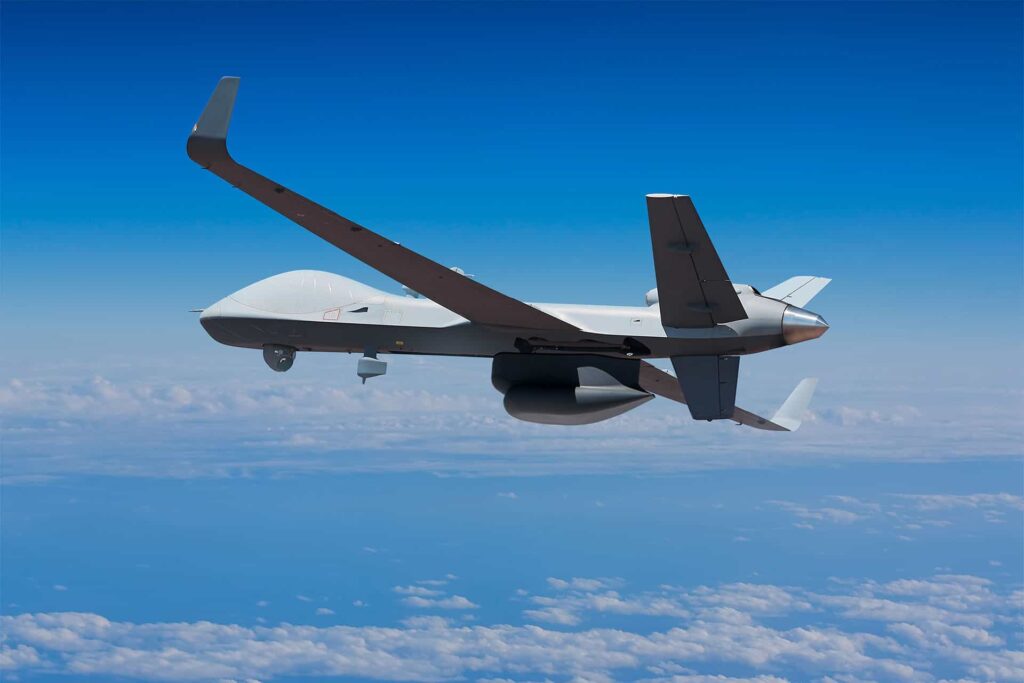
General Atomics Aeronautical Systems, Inc. (GA-ASI) has successfully completed flight testing of a Self-Protection Pod (SPP) for its MQ-9 unmanned aerial system (UAS). The pod allows the aircraft to track Radio Frequency (RF) and Infrared (IR) missile threats and to deploy countermeasures, and provides real-time threat awareness and protection.
The development of the pod was undertaken as part of a Cooperative Research and Development Agreement (CRADA) with U.S. Special Operations Command (USSOCOM), and with the support of the Air National Guard (ANG), the U.S. Navy (USN), and industry partners Raytheon Intelligence & Space, BAE Systems, Leonardo, Leonardo DRS, and Terma North America.
The SPP uses state-of-the-art Aircraft Survivability Equipment (ASE) to provide full-spectrum awareness and countermeasures. It incorporates a podded AN/ALR-69A(V) Radar Warning Receiver (RWR), and the Leonardo DRS AN/AAQ-45 Distributed Aperture Infrared Countermeasure (DAIRCM) System, which utilizes a single sensor for both 2-color IR missile warning and wide field-of-view gimbal for threat countermeasures. These countermeasures are provided by the BAE Systems ALE-47 Countermeasures Dispenser System, which dispenses airborne flares, chaff, and other airborne decoys.
At the heart of the SPP is the Terma AN/ALQ-213 Electronic Warfare Management System, which provides the interface, health, status, and command and control for the various systems installed in the pod. The AN/ALQ-213 functions as the Aircraft Survivability Equipment (ASE) manager, coordinating between the various threat warning and dispensing systems to automatically dispense the appropriate sequencing pattern and expendables to protect the MQ-9.
David R. Alexander, President of GA-ASI, commented: “Threat awareness and survivability are critical capabilities needed to enable the MQ-9 to operate in a contested environment. GA-ASI is committed to expanding the mission envelope of the MQ-9 to enable not only the warfighters’ needs of today, but also to ensure the platform remains a survivable, capable, and highly adaptable platform for the future fight.”


















